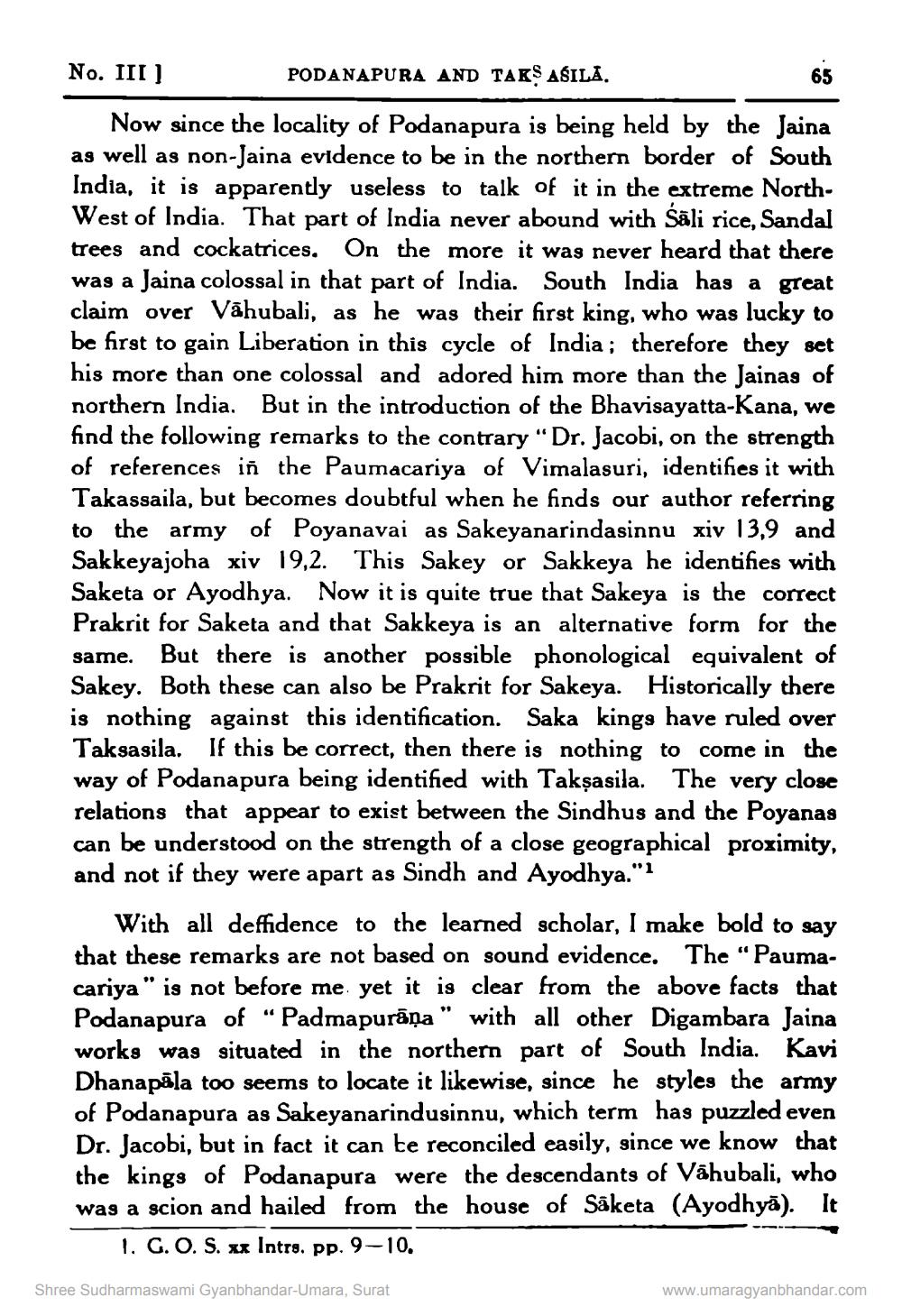________________
No. III)
PODANAPURA AND TAKSAŠILA. Now since the locality of Podanapura is being held by the Jaina as well as non-Jaina evidence to be in the northern border of South India, it is apparently useless to talk of it in the extreme NorthWest of India. That part of India never abound with Śāli rice, Sandal trees and cockatrices. On the more it was never heard that there was a Jaina colossal in that part of India. South India has a great claim over Vāhubali, as he was their first king, who was lucky to be first to gain Liberation in this cycle of India ; therefore they set his more than one colossal and adored him more than the Jainas of northern India. But in the introduction of the Bhavisayatta-Kana, we find the following remarks to the contrary “Dr. Jacobi, on the strength of references in the Paumacariya of Vimalasuri, identifies it with Takassaila, but becomes doubtful when he finds our author referring to the army of Poyanavai as Sakeyanarindasinnu xiv 13,9 and Sakkeyajoha xiv 19,2. This Sakey or Sakkeya he identifies with Saketa or Ayodhya. Now it is quite true that Sakeya is the correct Prakrit for Saketa and that Sakkeya is an alternative form for the same. But there is another possible phonological equivalent of Sakey. Both these can also be Prakrit for Sakeya. Historically there is nothing against this identification. Saka kings have ruled over Taksasila. If this be correct, then there is nothing to come in the way of Podanapura being identified with Takşasila. The very close relations that appear to exist between the Sindhus and the Poyanas can be understood on the strength of a close geographical proximity, and not if they were apart as Sindh and Ayodhya."?
With all deffidence to the learned scholar, I make bold to say that these remarks are not based on sound evidence. The “Paumacariya" is not before me. yet it is clear from the above facts that Podanapura of “Padmapurāņa" with all other Digambara Jaina works was situated in the northern part of South India. Kavi Dhanapāla too seems to locate it likewise, since he styles the army of Podanapura as Sakeyanarindusinnu, which term has puzzled even Dr. Jacobi, but in fact it can be reconciled easily, since we know that the kings of Podanapura were the descendants of Vāhubali, who was a scion and hailed from the house of Sāketa (Ayodhyā). It
1. G. O. S. xx Intrs. pp. 9–10.
Shree Sudharmaswami Gyanbhandar-Umara, Surat
www.umaragyanbhandar.com




